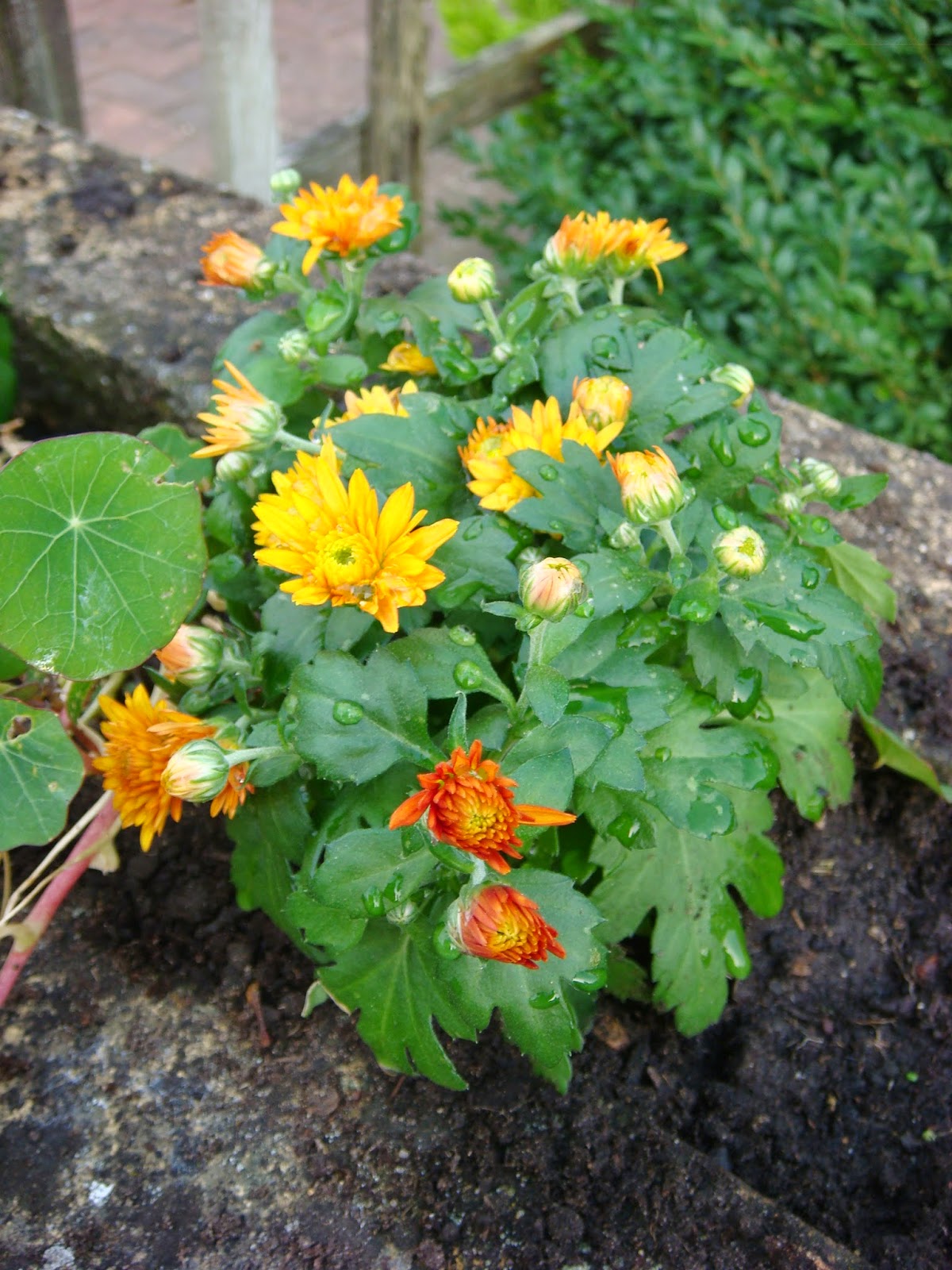 |
| Chrysanthemum indicum |
We had no luck finding that out, although it also gradually dawned on me that none of my garden is safe from slugs anyhow, so it's really pretty much irrelevant. If they can't survive slugs, they won't survive my garden.
What we did discover though, is that they're considered good companion plants for vegetables because they repel insects and other pests from surrounding plants and their crushed, dried flowers can be used as a pesticide. Wikipedia says this is because chrysanths contain pyrethrums and these are thought to repel aphids, bed bugs, leafhoppers, spider mites, harlequin bugs, ticks, pickleworms, and imported cabbage worms (whatever those are). This is good news on two fronts, firstly I desperately need anything that can repel pests in my garden and secondly because I want my vegetable garden to be as pretty as possible, so having a reason to plant flowers is good.
I've planted two of the chrysanthemums in my window box of nasturtiums. They're pretty much covered in black aphids and the marigolds I planted between them have been devastated, presumably at the mouths of slugs. We'll see whether the chrysanthemums can hold their own. I've also planted four at the front of the garden where the marigolds have been stripped bare of leaves. If they can survive the slug and snail onslaught I'll dry the flowers I deadhead and crush them to powder to use as an organic pesticide. It would be good if it works. I'm still having real difficulty keeping my veg safe from insects (the rocket is covered in something that looks like eggs) and I'd really like to have an organic method of killing pests, as I don't want to go accidentally killing bees with non-organic pesticides (there are reports on the Internet that neonicotinoids may well be responsible killing large numbers of bees, whereas chrysanthemums and are entirely natural, give or take selective breeding, and are therefore highly unlikely to be responsible for colony collapse disorder). Much as I want to successfully grow veg in my back garden, it doesn't seem worth risking the lives of bees and other beneficial insects for it.
No comments:
Post a Comment